Where do you go if you visit Jaipur in summer? Hawa Mahal, or “The Palace of Winds,” of course. This red sandstone architectural beauty is like an emblem of the city and the most popular photo spot. Even if you haven’t visited Jaipur yet, chances are you’ve seen a picture of Hawa Mahal.
We were in Jaipur last week, and although it was still April, temperatures were already high. Despite the scorching sun outside, true to its name, the Hawa Mahal inside was incredibly cool, almost like being centrally air-conditioned.
This was our umpteenth trip to the Pink City and we meticulously visited all the art and cultural sites of Jaipur. The impressive facade of Hawa Mahal has been our favourite photo point. But we were told there wasn’t much to do inside. However, during our recent summer vacation to Jaipur, we wanted to check things out for ourselves. To avoid the heat, we started early from our hotel that was part of the famed Peacock Café, and took an app-cab to Hawa Mahal.
Contents
What is special about Hawa Mahal?
Hawa Mahal stands like a crown on the head of the Pink City. At one end of the market square, it is not only a must-visit in Jaipur, but also almost welcomes you to the Jaipur experience. Hawa Mahal, at five stories, is the tallest building in the world that has been erected without a foundation. To balance the height, the building is at a slight tilt which also adds an aesthetic advantage to the structure.

The highest side of the Hawa Mahal is the façade that has numerous windows. From the road, it looks like an elongated honeycomb. The windows keep the palace cool in the hottest summer. You can see one of the best sunsets in Rajasthan from these windows. The windows are the specialty of Hawa Mahal. No wonder this red sandstone architectural beauty is like an emblem of the city and the most popular photo spot.
How many windows are in Hawa Mahal?
There are 953 windows or Jharokhas in Hawa Mahal. The windows were created so that the royal women, who were not allowed to come out in public, could see the roads as well as the festivals and celebrations on the road. The windows also play another important role. These ensure abundant ventilation for the palace. That explains why we felt so cool and comfortable while inside the palace.
Pin it for later Read

What is inside Hawa Mahal?
It was surprising that the window facade was the posterior side of the Hawa Mahal while the main entrance was on the opposite side. When we walked inside the Hawa Mahal complex, we found many other smaller buildings that were now converted to ticket counters, police postings, souvenir shops, and photo booths.
An elaborate canopied door led us to a square courtyard with a fountain at the centre. The fountain is on sometimes, and we were lucky. The walls of the palace were covered with stucco plaster and the wood doors had retained paintings in rich colours. We climbed to the upper floors that were connected with ramps in narrow passages. The palace was a maze-like design. It was very easy to get lost in this labyrinth. Stairs are replaced with ramps to facilitate the movement of palanquins.
The windows of Hawa Mahal were fitted with coloured glass-red, green, yellow, and blue. The sunlight coming through the glasses created colour blocks on the floor. The visual was absolutely stunning. Some of the windows were open for visitors to look out. If you look down, you would see the busy streets of Jaipur down below. The contrast in the peace inside the palace and the bustle outside is almost surreal.
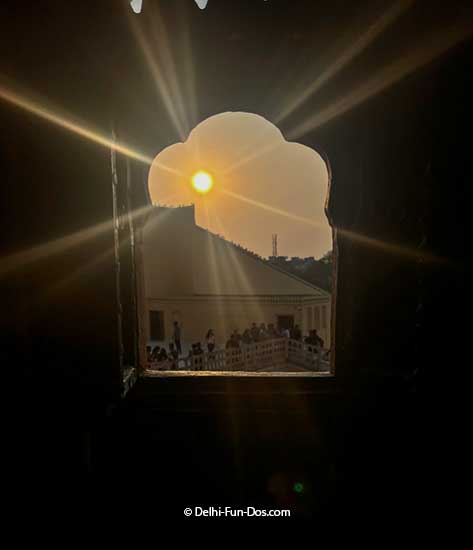
And if you are visiting late afternoon, don’t miss out on looking at the sky. You would be witnessing one of the most picturesque sunsets of India. All the floors had a similar plan with rooms on one side and a terrace outside. Elaborate Rajasthani dome-roofed canopies were built at the edge of every terrace. Such ornamentation connected Hawa Mahal to the other palaces we have seen in Rajasthan.
Things to do in Hawa Mahal
First, you can walk up to the top floor of Hawa Mahal. The passages would take you to another era while the upper floor would give you an aerial view of the Pink City. There are Kathputli or Rajasthani puppet shows held at makeshift booths inside the palace. You may have watched such shows elsewhere but the palace rooms make it a surreal setting for watching a puppet show.

There are some old statues exhibited in the first-floor passage. Some of them date back to the 11th century. Although it is a small display, a dancing panel and an elaborate door head give you an impression of Rajasthani culture in yesteryears. And if you are tired, fret not. There is a simple café in one of the rooms on the ground floor. Basic items like beverages, ice creams, sandwiches, samosas, cream rolls, and similar items are available here. You can sit on the benches overlooking the fountain and refresh yourself over such nibbles.
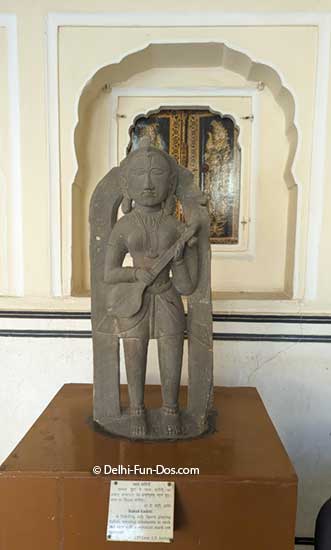
Hawa Mahal Timing and Ticket
Hawa Mahal is open from 9 am to 4:30 pm and you have to be out by 5 pm. Tickets are available at the ticket counter just before the main palace of Hawa Mahal or you can purchase online by using the scanner placed beside the ticket counter. Keep one and a half hours for visiting Hawa Mahal. If you want to cover the additional attractions, it could be a half-day to a full-day affair.
Things to do near Hawa Mahal
Hawa Mahal is like the heart of Jaipur. There are a lot of activities in the surrounding areas that you could easily spend the day here.
Souvenir shopping in Jaipur
Rajasthani is rich in crafts. The footpaths near Hawa Mahal are lined with shops that sell Rajasthani goods. From touristy turbans, key tags, and funky ornaments, you would find shops selling the famous Jaipuri Rajai, embroidered leather bags, Rajasthani printed clothes, and so on in this area.
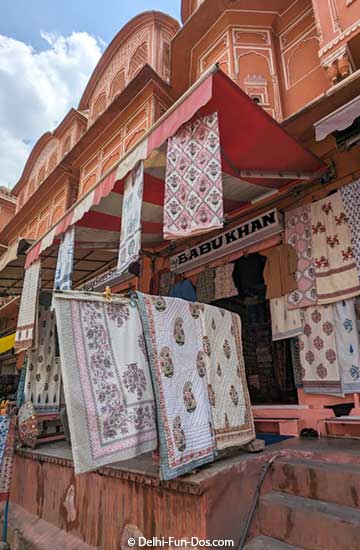
Travel Tip: Contrary to our earlier tours in this region, we found an invasion of digital copies of hand-printed or hand-dyed Bandhni items. A little discretion is therefore advisable.
Johari Bazar
The word Johari means “jeweler”. This traditional jewelry market of Jaipur is in the Hawa Mahal area. On a good day, or in the evening, you can walk it. This market is famous for gems and jewels, silver ornaments, and traditional clothes. The best of Bandhni or tied-and-dyed saris, salwar suits, and fabrics are available here. Also, we found a lane that had awesome ghewar and kachori shops.
Travel Tip: Johari Bazar area starts closing by 7 pm and most of it is shut on Sundays. So please plan accordingly.
Govindji Temple
Behind Hawa Mahal is Govind Ji temple dedicated to Radha and Krishna. You walk a few meters left on the window side of Hawa Mahal and enter another cloister through another gate to reach this area. The temple is closed in the afternoons.
What to eat near Hawa Mahal
Rajasthani food is unique in flavour and texture. You might have had kachoris and jalebis elsewhere. However, what you get in Jaipur is a notch above. You should look up stalls surrounding Hawa Mahal that sell kachoris and try the dal and pyaz kachoris. Curry-kachori is a street food that would keep you drooling.

Ghewar – A must-eat when in Jaipur
The summer was perfect for the flavourful buttermilk or chhanch we had opposite Hawa Mahal. Also, it would be sacrilege if you leave Jaipur without ghewar. Malai Ghewar or plain, it is a notch above ghewar elsewhere. There are many confectionaries near Hawa Mahal and the ghewar at any of these places should not shock you.
Hawa Mahal is more than just a stunning building’s the essence of Jaipur’s culture. Nothing complex, it is a testament to the simple pleasures of Jaipur life. The intricate design, rich history, and diverse activities and food, a trip here offers more than sightseeing-Hawa Mahal is an enriching journey into the heart of Jaipur.


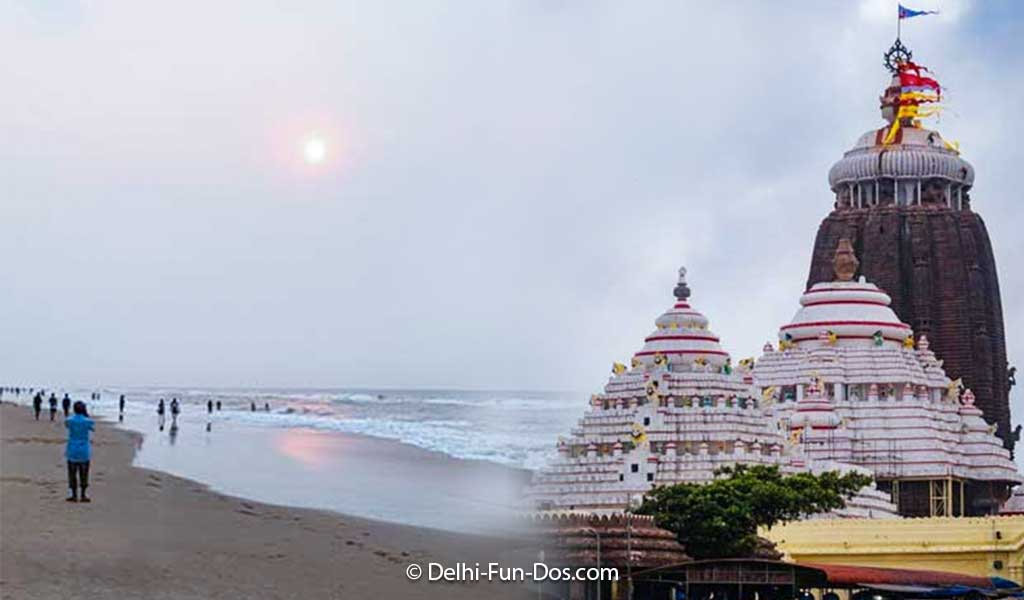
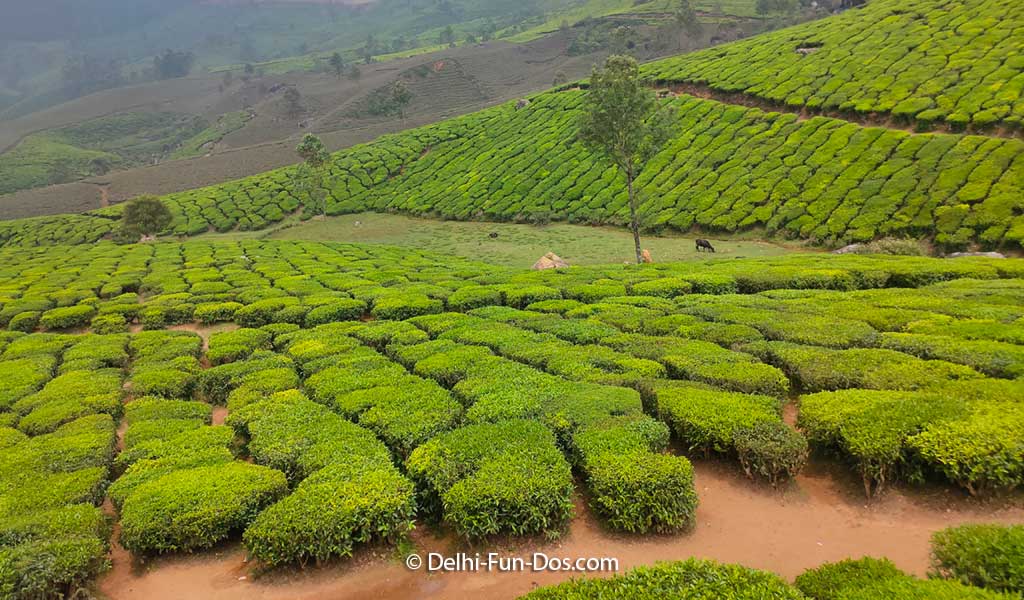
Hawa Mahal is truly an iconic landmark of Jaipur. More often than not its cosmetic value overshadows the utilitarian aspects for which it was built. Nice to see your detailed post that explains the intricacies of Hawa Mahal. Sandy N Vyjay
Wow, Sundeep and Bedabrata, reading about your exploration of Hawa Mahal brought back so many memories! Thank you for sharing your detailed experience on your blog. It’s incredible how you managed to uncover the hidden gems within such a iconic structure. Your adventure inside the Hawa Mahal sounds like a journey filled with surprises and delights. I can’t wait to plan my own visit and experience the magic firsthand. Keep sharing your adventures – they’re truly inspiring!